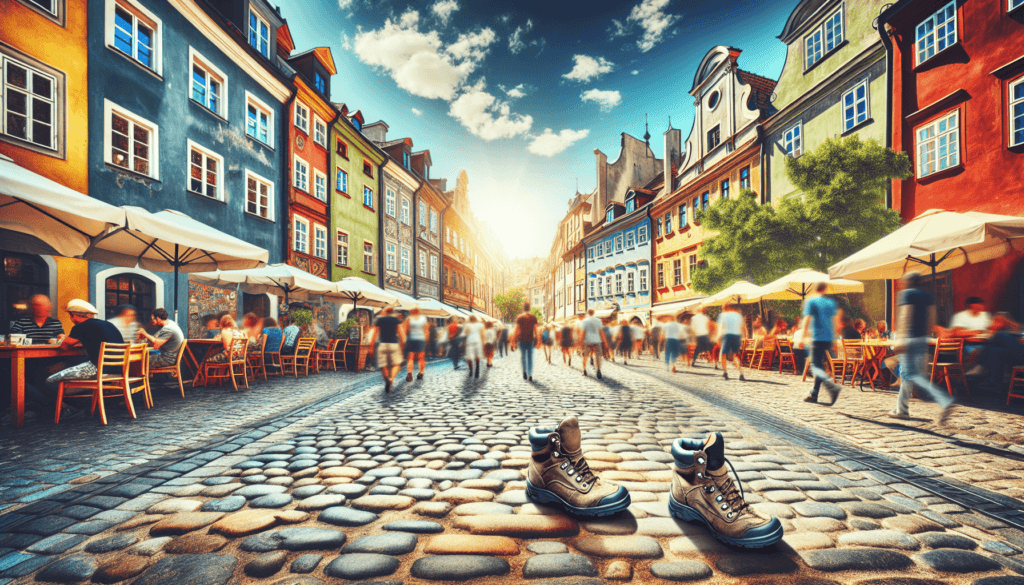What makes a city truly exceptional for walking? While various factors contribute to the appeal of pedestrian-friendly urban environments, those that thoughtfully blend culture, history, accessibility, and safety tend to leave an indelible mark on adventurous souls. In a world where cities compete for attention, certain destinations stand out as havens for enthusiastic walkers and explorers. The following exploration of the best walking cities aims to provide insight into what makes these urban landscapes so inviting for those who cherish the journey of foot travel.

Table of Contents
Historical Perspectives on Walking Cities
Walking has been an intrinsic part of human life since time immemorial. Many of the world’s most renowned cities evolved from ancient settlements, emphasizing connectivity and community. In examining walking cities, it is insightful to analyze their historical foundations.
The Ancient Roots of Urban Foot Traffic
The ancient Greeks and Romans laid the groundwork for urban planning by creating well-defined paths and public spaces that encouraged pedestrian movement. Notably, the Agora in Athens served as a communal hub for commerce and social interaction, underscoring the importance of walking as a means of not only transportation but also socialization.
The Industrial Revolution and Its Impact
As cities blossomed during the Industrial Revolution, pedestrian pathways became common in urban planning. The need for more efficient transport led to expanding road networks, yet many cities retained their pedestrian-friendly elements. The parks and boulevards established during this period were designed to accommodate walkers, fostering a sense of connection with nature and community.
Defining Characteristics of Walkable Cities
Although many cities can boast walkable neighborhoods, a select few truly embody the essence of pedestrian-friendly living. Key characteristics often include:
Accessibility
Cities that prioritize accessibility are more appealing to walkers. Sidewalks, pedestrian crossings, and public transport options should facilitate movement not only for the able-bodied but also for individuals with disabilities. Thoughtfully designed zones can enhance the overall experience for all pedestrians.
Safety Measures
A comfortable walking experience hinges on personal safety. Cities with well-lit streets, visible pedestrian signage, and low vehicle speeds create a reassuring atmosphere that encourages exploration. Safe crossings and well-maintained sidewalks further contribute to peace of mind while walking.
Cultural and Historical Significance
Cities that offer a rich tapestry of culture and history tend to entice pedestrians who appreciate engaging narratives. Walkable cities often feature squares, monuments, and street art that encourage exploration and discovery. Experiencing the unique elements of urban history while walking enriches the adventure.
Public Spaces
Green spaces, parks, and public squares serve as essential components of walkable cities. They provide rest areas and opportunities for social interaction while enhancing the quality of life for residents. A well-designed city incorporates these elements to create a welcoming atmosphere for walkers.

Top Walking Cities Around the World
Having established what makes a city walkable, the next step is to examine those most revered by walkers. Below is a detailed exploration of select cities that consistently rank as the best in terms of walkability.
1. Paris, France
Paris emerges as a quintessential walking city, characterized by its charming boulevards, historic attractions, and vibrant street life.
- Jacques Bonhomme’s Pathways: The Seine riverbanks feature walking paths that unveil a plethora of museums, gardens, and iconic landmarks such as Notre-Dame and the Eiffel Tower.
- Café Culture: The city encourages leisurely strolls punctuated by stops at its many cafés, where pedestrians can savor a croissant paired with a lingering conversation.
- Public Transport Integration: Efficient metro and bus systems enable walkers to venture beyond their immediate area and return safely after a long day of exploration.
2. Amsterdam, Netherlands
With its intricate canal system and narrow, winding streets, Amsterdam offers an unparalleled walking experience.
- Cycle-Friendly Environment: Though cycling is paramount here, the city’s layout remains highly accommodating to pedestrians. Many neighborhoods are free from vehicle traffic, allowing walkers to savor the scenery.
- Art and Culture on Every Corner: Walkers can encounter world-class museums, stunning architecture, and beautiful parks, ensuring that each turn reveals something new and exciting.
- Community Engagement: Through vibrant local markets and public events, Amsterdam fosters a sense of community and engagement among its residents and visitors.
3. Tokyo, Japan
Tokyo may boast a bustling environment, yet it remains surprisingly walkable, particularly in its core districts.
- Efficient Urban Design: The city’s layout is complemented by wide sidewalks and pedestrian-friendly layouts around transit stations, making it easy to navigate on foot.
- Cultural Experiences: From traditional temples to modern skyscrapers, Tokyo is a walking feast for the senses. Street vendors and artisanal shops invite walkers to pause and indulge.
- Safety and Cleanliness: The city is renowned for its safety, with low crime rates and hygienic public spaces enhancing the walking experience for locals and tourists alike.
4. London, England
London’s rich history is interwoven with its walkable neighborhoods, where walkers can traverse centuries of architecture and culture.
- Ultimate Historical Journey: The iconic Tower of London to Buckingham Palace creates a scenic route filled with landmarks and stories waiting to be uncovered.
- Public Transportation Integration: The extensive Tube and bus network provides easy access to distant attractions, ensuring that walking remains a pleasant primary mode of transportation during city exploration.
- Parks and Gardens: From Hyde Park to the Royal Botanic Gardens, London offers an abundance of green spaces ideal for strolling, picnicking, or simply soaking in nature.
5. San Francisco, USA
Renowned for its steep hills and iconic vistas, San Francisco provides a unique walking experience that challenges and delights.
- Scenic Views: The famous Golden Gate Bridge and stunning waterfront parks offer breathtaking views along various walkable routes.
- Neighborhood Diversity: Each neighborhood, from the historic Mission District to picturesque Chinatown, provides distinctive cultural experiences accessible on foot.
- Public Transport Support: The city’s cable cars and buses supplement walking, ensuring that adventurous explorers can cover ample ground without excessive fatigue.
Enhancing the Walking Experience
While the attractions and characteristics of each city contribute to their walkability, various tips can enhance the overall experience for avid walkers.
Dress Comfortably
A commitment to exploration requires appropriate attire. Comfortable footwear and weather-appropriate clothing are vital for ensuring that pedestrians can enjoy their stroll without discomfort.
Engage with Locals
One of the most rewarding aspects of walking in a new city is the opportunity to meet locals. Engaging with residents can lead to unexpected discoveries and insightful recommendations on hidden gems.
Plan Route and Timing
Although spontaneity can lead to delightful surprises, having a rough plan helps ensure that walkers do not miss significant attractions. Recognizing peak hours, local events, and seasonal changes can optimize the walking experience.

The Economic and Environmental Impact of Walkable Cities
Understanding the broader implications of walkable cities extends beyond mere convenience. There exists a profound economic and environmental impact associated with promoting walking in urban areas.
Economic Benefits
Walkable cities often stimulate local economies by attracting foot traffic. Small businesses, cafés, and shops can thrive in areas with high pedestrian activity, contributing to a vibrant local culture.
Environmental Sustainability
Encouraging walking reduces reliance on cars, thus decreasing traffic congestion and harmful emissions. Maintaining pedestrian-friendly environments supports a healthier ecosystem, underscoring the importance of sustainability in urban planning.
Conclusion
Cities distinguished by their walkability possess an allure that beckons adventurers to investigate their streets. With a combination of accessibility, safety, cultural significance, and engaging public spaces, these urban landscapes foster enjoyable exploration. Individuals seeking enriching travel experiences would benefit from considering the cities discussed in this article as they embark on their next journey. Walking through a city offers a closer connection to its essence, revealing stories and perspectives often overlooked by those who choose alternative modes of transport. Consequently, walking should be not just a means of navigation but a celebrated activity in the adventure of discovering what the world has to offer.

Hot✈️ Lakefront Cottage by Little Golden Gate Bridge, Beaver, United States
